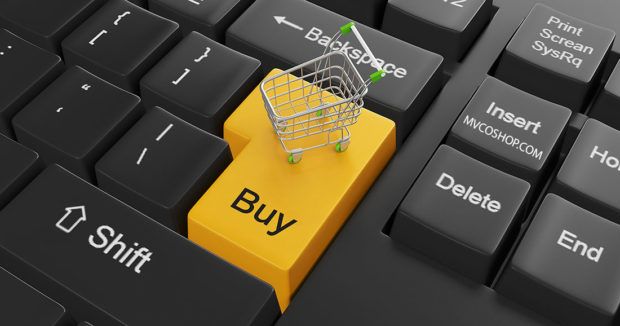Ecommerce Isn't Just About Online Sales
by Lindsay Rowntree on 10th Mar 2016 in News

Online to offline purchasing behaviours, and vice versa, are challenging ecommerce brands to find new ways to effectively target their consumers. A recent roundtable event hosted by HookLogic brought together brands and marketers to fuel a discussion around ecommerce and how online sales are only half the story.
The panel, including representatives from Heineken, Nomad Foods (owner of the Bird’s Eye brand), iProspect and Criteo, cited challenges within the ecommerce sector, such as the significant growth of mobile, transparency between brands and their retail partners and the ability to effectively link back in-store transaction data to develop an online to offline strategy.
Ecommerce brands are keen to establish the differentiation between driving online sales and driving online consideration for consumers to complete a sale offline. Personalisation is key, but consumer education is required to ensure the capabilities of connecting online engagement to in-store transactions are met with consensus across the industry.
Jon Buss, managing director, UK & Northern EMEA, Criteo gave the example of Argos, which is able to achieve this by asking in-store customers for their email addresses at the till. This allows Argos to capture transaction-level data, encrypt the email addresses and build anonymous first-party audiences to deliver personalised messages online. This is an extension of their hugely successful Reserve & Collect model, which allows them to efficiently tie online and offline together. The benefit to the in-store consumer of providing an email address is an e-receipt. However, the panellists agreed that making the consumer understand the business value of that email address is imperative to maintain consumer trust and loyalty.
All panellists agreed that the prevalence of mobile, and the distinct way in which consumers interact with the device, make it an important focus for them. With trends showing that consumers complete their weekly online shops on desktops but ‘add along the way’ on mobile devices, it is vital to deliver a personalised and relevant experience based on that usage behaviour. Jonathan Opdyke, CEO, HookLogic, said that mobile usage is a trend that just isn’t slowing down and in the US, mobile traffic on Thanksgiving morning hit 70%. David Hutchinson, director, paid media, iProspect agreed, commenting that brands that are adopting a mobile-first strategy will ultimately win in this space. The importance is for brands not to view mobile as just another device; but instead, to understand how their mobile usage changes based on certain conditions and how brands can take full advantage of that, without harassing their customers and becoming an intrusion in their lives.
Mobile personalisation, and the ability to target consumers based on their distance from physical store location, is being tested by many brands. While all agreed that there is a long way to go before it becomes a key part of any mobile strategy, examples were cited which show the value of consumer reward with mobile location targeting and the increased engagement it drives, such as Subway rewarding it’s younger audience with a new Snapchat filter upon purchase.
Again, consumer education is key to maximise the effectiveness of this medium. Jon Buss, managing director, UK & Northern EMEA, Criteo, argued that we are a long way from accurate personalisation, but it is something that all agreed is a key strategy driver for 2016. Buss said that understanding the consumer and joining the dots throughout the purchase journey is what is required to achieve this.
Ben Cooper, managing director, Europe, HookLogic, was interested to know how predominantly brand-led advertisers are able to translate their branding efforts into an ecommerce strategy. Francis Nicholas, group head of ecommerce, Nomad Foods, said that they viewed ecommerce as both a sales channel and an advertising medium, due to its ability to drive sales both on and offline. While in-store sales are harder to quantify, they are equally important and its vital to have some understanding of how online spend translates into offline sales.
Nicola Harrison, online & digital development manager, Heineken, agreed and said that Heineken are actively trying to combine their branding and ecommerce marketing efforts, as they fully realise that the overlap between them is growing and growing. She said that online has great importance as a promotional channel and they are able to tie it in with their above-the-line activities to drive sales across the board, not just awareness.
The challenge cited by David Hutchinson, director, paid media, iProspect, is the transparency between brands and their retail partners. He said that his brand-led clients receive very little insight into transaction-level data from retailers and the marketing strategies that drove them. Brands pay their retail partners' co-op budget, and the retailers are under no obligation to inform the brands how that budget is spent. It is a struggle to effectively manage an online and offline retail strategy for your products when you have very little control over how they are sold and how your potential customers are targeted. It’s a sentiment that all panellists agreed with and a practice that needs to change.
Ultimately, the HookLogic-hosted event proved that it’s a very exciting time to be in the ecommerce industry. The speed at which it’s evolving is driving innovation across the sector and fuelling a complete change in infrastructure among advertisers, to ensure they are equipped to deal with the ever-changing purchase behaviours of their consumers.
DataDigital MarketingDisplayLocationMobileProgrammatic








Follow ExchangeWire